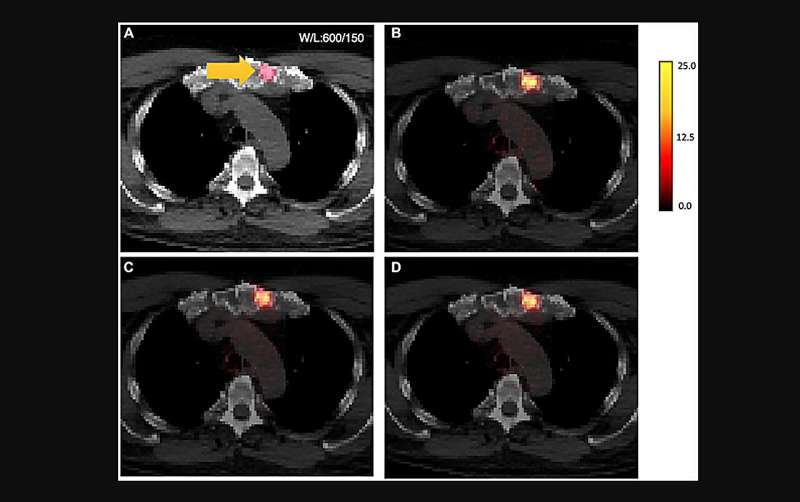Deep learning-based whole-body PSMA PET/CT attenuation correction utilizing Pix-2-Pix GAN


A new research paper was published in Oncotarget, titled “Deep learning-based whole-body PSMA PET/CT attenuation correction utilizing Pix-2-Pix GAN.”
Radiation dosage limits the sequential PET/CT studies oncology patients can undergo during their treatment follow-up course.
In this new study, researchers from the National Institutes of Health’s National Cancer Institute proposed an artificial intelligence (AI) tool to produce attenuation-corrected PET (AC-PET) images from non-attenuation-corrected PET (NAC-PET) images to reduce need for low-dose CT scans.
“AI-generated PET images have clinical potential for reducing the need for CT scans for attenuation correction while preserving quantitative markers and image quality in prostate cancer patients,” write the researchers.
A deep learning algorithm based on 2D Pix-2-Pix generative adversarial network (GAN) architecture was developed from paired AC-PET and NAC-PET images. 18F-DCFPyL PSMA (prostate-specific membrane antigen) PET-CT studies from 302 prostate cancer patients split into training, validation, and testing cohorts (n = 183, 60, 59, respectively). Models were trained with two normalization strategies: Standard Uptake Value (SUV)-based and SUV-Nyul-based.
Scan-level performance was evaluated by normalized mean square error (NMSE), mean absolute error (MAE), structural similarity index (SSIM), and peak signal-to-noise ratio (PSNR). Lesion-level analysis was performed in regions-of-interest prospectively from nuclear medicine physicians. SUV metrics were evaluated using intraclass correlation coefficient (ICC), repeatability coefficient (RC), and linear mixed-effects modeling.
Median NMSE, MAE, SSIM, and PSNR were 13.26%, 3.59%, 0.891, and 26.82, respectively, in the independent test cohort. ICC for SUVmax and SUVmean were 0.88 and 0.89, which indicated a high correlation between original and AI-generated quantitative imaging markers. Lesion location, density (Hounsfield units), and lesion uptake were all shown to impact relative error in generated SUV metrics (all p < 0.05).
“The Pix-2-Pix GAN model for generating AC-PET demonstrates SUV metrics that highly correlate with original images. AI-generated PET images show clinical potential for reducing the need for CT scans for attenuation correction while preserving quantitative markers and image quality,” state the authors.
More information:
Kevin C. Ma et al, Deep learning-based whole-body PSMA PET/CT attenuation correction utilizing Pix-2-Pix GAN, Oncotarget (2024). DOI: 10.18632/oncotarget.28583
Provided by
Impact Journals LLC
Citation:
Study: Deep learning-based whole-body PSMA PET/CT attenuation correction utilizing Pix-2-Pix GAN (2024, May 9)
retrieved 10 May 2024
from https://medicalxpress.com/news/2024-05-deep-based-body-psma-petct.html
This document is subject to copyright. Apart from any fair dealing for the purpose of private study or research, no
part may be reproduced without the written permission. The content is provided for information purposes only.





